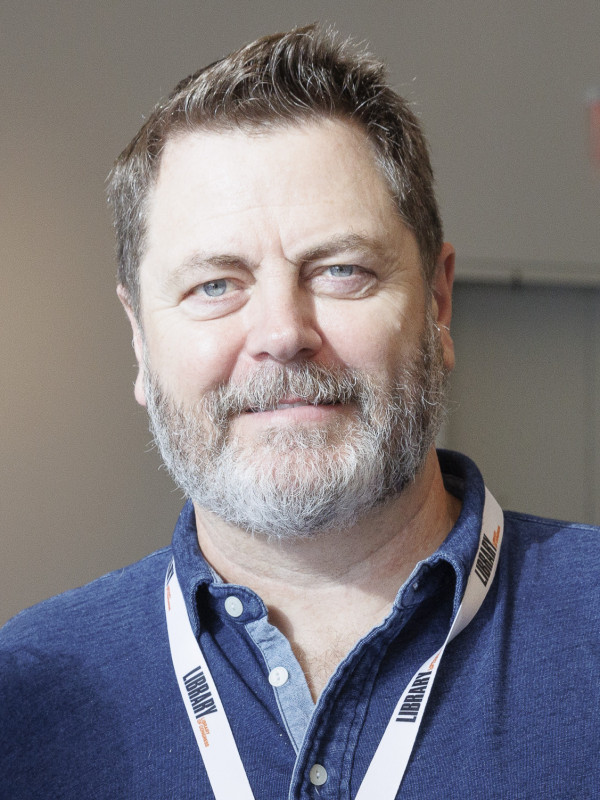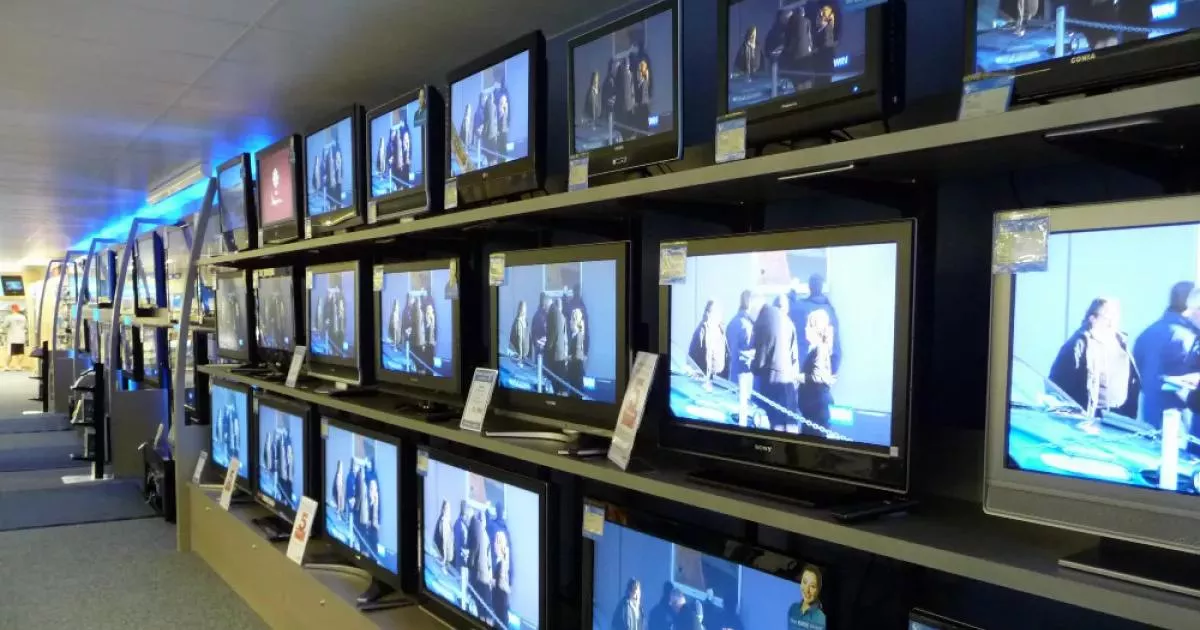Television is a telecommunication medium that transmits moving images and sound. The term can refer to the transmission medium or the physical television set itself. It serves as a mass medium for various content, including advertising, entertainment, news, and sports. Unlike radio broadcasting, which only transmits audio, television transmits both audio and visual signals.
August 1900: Constantin Perskyi coins the word television
In August 1900, during the first International Congress of Electricity at the International World Fair in Paris, the Russian scientist Constantin Perskyi used the word 'television' in a paper he presented, marking the first documented usage of the term.
1904: Proposal for the name of a then-hypothetical technology: televista
In 1904, "televista" was proposed as a name for the hypothetical technology for sending pictures over distance.
1906: First raster images produced in a CRT
In 1906, Max Dieckmann and Gustav Glage produced raster images for the first time using a CRT.
1907: Adamian experiments with color television
As early as 1907, Hovannes Adamian experimented with color television.
1907: Boris Rosing uses CRT to display geometric shapes
In 1907, Russian scientist Boris Rosing used a CRT in the receiving end of an experimental video signal to form a picture, displaying simple geometric shapes onto the screen.
1907: Amplification tube technology developments made design practical
In 1907, developments in amplification tube technology by Lee de Forest and Arthur Korn, among others, made the design of television practical.
1907: First Attestation of the Anglicized Term Television
In 1907, the anglicized version of the term "television" was first attested. At this time, it was considered a theoretical system for transmitting moving images over telegraph or telephone wires, formed in English or borrowed from French télévision.
March 1908: Adamian patents color television in Germany
On March 31, 1908, Hovannes Adamian patented a color television project in Germany, patent No. 197183.
April 1908: Adamian patents color television in Britain
On April 1, 1908, Hovannes Adamian patented a color television project in Britain, patent No. 7219.
1908: Alan Archibald Campbell-Swinton describes "distant electric vision"
In 1908, Alan Archibald Campbell-Swinton published a letter in Nature describing how "distant electric vision" could be achieved using a cathode-ray tube (Braun tube) as both a transmitting and receiving device.
1909: Georges Rignoux and A. Fournier demonstrate live transmission of images
In 1909, Georges Rignoux and A. Fournier demonstrated the live transmission of images in Paris. They used a matrix of 64 selenium cells wired to a mechanical commutator as an electronic retina. The 8x8 pixel resolution was sufficient to transmit individual letters of the alphabet.
1910: Adamian patents color television in Russia
In 1910, Hovannes Adamian patented a color television project in Russia, patent No. 17912.
1911: Campbell-Swinton expands on his vision for "distant electric vision"
In 1911, Alan Archibald Campbell-Swinton expanded on his vision for achieving "distant electric vision" in a speech given in London. This was reported in The Times and the Journal of the Röntgen Society.
1911: Boris Rosing and Vladimir Zworykin create a system to transmit crude images
In 1911, Boris Rosing and his student Vladimir Zworykin created a system that used a mechanical mirror-drum scanner to transmit "very crude images" over wires to a cathode-ray tube (CRT) in the receiver. Moving images were not possible due to limitations in sensitivity and the selenium cell's lag.
1913: Jenkins publishes article on "Motion Pictures by Wireless"
In 1913, U.S. inventor Charles Francis Jenkins published an article on "Motion Pictures by Wireless", marking an early contribution to the field of wireless image transmission.
March 1914: Campbell-Swinton experiments conducted before March 1914
Before March 1914, Campbell-Swinton, G. M. Minchin, and J. C. M. Stanton conducted experiments to generate an electrical signal by projecting an image onto a selenium-coated metal plate scanned by a cathode ray beam.
1921: Édouard Belin Sends First Image via Radio Waves
In 1921, Édouard Belin achieved a milestone by sending the first image via radio waves using his belinograph.
March 1922: Jenkins files patent for Transmitting Pictures over Wireless
On March 13, 1922, Charles Francis Jenkins filed U.S. Patent No. 1,544,156 for "Transmitting Pictures over Wireless," which was later granted on 30 June 1925.
1922: First hot cathode CRT developed
In 1922, the first cathode-ray tube to use a hot cathode was developed by John B. Johnson and Harry Weiner Weinhart of Western Electric and became a commercial product.
December 1923: Jenkins Transmits Moving Silhouette Images for Witnesses
In December 1923, Charles Francis Jenkins transmitted moving silhouette images for witnesses, demonstrating early progress in television technology.
1923: Zworykin begins developing an electronic camera tube
In 1923, Vladimir Zworykin began developing an electronic camera tube while working for Westinghouse Electric.
1924: Kálmán Tihanyi begins development of charge-storage technology
In 1924, Kálmán Tihanyi began developing charge-storage technology to address the problem of low sensitivity to light in transmitting tubes.
March 1925: Baird gives first public demonstration of televised silhouette images in motion
On March 25, 1925, John Logie Baird gave the first public demonstration of televised silhouette images in motion at Selfridges's department store in London. He televised a ventriloquist's dummy named "Stooky Bill".
June 1925: Jenkins publicly demonstrates synchronized transmission of silhouette pictures
On June 13, 1925, Charles Francis Jenkins publicly demonstrated synchronized transmission of silhouette pictures.
1925: Dieckmann and Hell submit patent application for image dissector
In 1925, Dieckmann and Hell submitted a patent application in Germany for their Lichtelektrische Bildzerlegerröhre für Fernseher (Photoelectric Image Dissector Tube for Television).
1925: Zworykin's demonstration shows a dim, low-quality image
In 1925, a demonstration of Vladimir Zworykin's electronic camera tube produced a dim image with low contrast and poor definition.
1925: Leon Theremin develops mirror drum-based television
In 1925, in the Soviet Union, Leon Theremin started developing a mirror drum-based television, starting with 16 lines resolution.
January 1926: Baird demonstrates transmission of a face in motion by radio
On January 26, 1926, John Logie Baird demonstrated the transmission of an image of a face in motion by radio before members of the Royal Institution. This is widely regarded as the world's first true public television demonstration, exhibiting light, shade, and detail.
March 1926: Kálmán Tihanyi files patent for "Radioskop"
In March 1926, Hungarian engineer Kálmán Tihanyi filed a patent application in Hungary for a television system he called "Radioskop".
May 1926: Theremin projects near-simultaneous moving images
On May 7, 1926, Leon Theremin electrically transmitted and then projected near-simultaneous moving images on a 5-square-foot screen as part of his thesis.
October 1926: Campbell-Swinton announces "not very successful experiments"
In October 1926, Campbell-Swinton announced in a letter to Nature the results of some "not very successful experiments" with G. M. Minchin and J. C. M. Stanton where they attempted to generate an electrical signal by projecting an image onto a selenium-coated metal plate scanned by a cathode ray beam.
December 1926: Kenjiro Takayanagi demonstrates a TV system
On 25 December 1926, at Hamamatsu Industrial High School in Japan, Japanese inventor Kenjiro Takayanagi demonstrated a TV system with a 40-line resolution that employed a CRT display.
December 1926: Kenjiro Takayanagi demonstrates a television system with a 40-line resolution
On December 25, 1926, Kenjiro Takayanagi demonstrated a television system with a 40-line resolution that employed a Nipkow disk scanner and CRT display at Hamamatsu Industrial High School in Japan.
April 1927: Bell Telephone Laboratories give dramatic demonstration of mechanical television
On April 7, 1927, Herbert E. Ives and Frank Gray of Bell Telephone Laboratories gave a dramatic demonstration of mechanical television, showcasing both small and large viewing screens with synchronized sound. The telecast included Secretary of Commerce Herbert Hoover. The scanner disc revolved at a rate of 18 frames per second.
September 1927: Philo Farnsworth transmits first image
On 7 September 1927, U.S. inventor Philo Farnsworth's image dissector camera tube transmitted its first image, a simple straight line, at his laboratory in San Francisco.
1927: RCA asserts patent interference suit against Farnsworth
Based on Vladimir Zworykin's 1923 patent application, RCA asserted that the patent for Philo Farnsworth's 1927 image dissector was written so broadly that it would exclude any other electronic imaging device and filed a patent interference suit against Farnsworth.
1927: Theremin achieves an image of 100 lines
By 1927, Leon Theremin had achieved an image of 100 lines resolution with his television system.
1927: Baird transmits signal over telephone line between London and Glasgow
In 1927, John Logie Baird transmitted a television signal over 438 miles (705 km) of telephone line between London and Glasgow.
1927: Term TV used to refer to television medium
In 1927, the term 'TV' began to be used to mean 'television as a medium'.
January 1928: Experimental television station W2XB founded by General Electric
In January 1928, WRGB claims its roots to an experimental television station W2XB were founded on January 13, 1928, broadcasting from the General Electric factory in Schenectady, NY. It was popularly known as "WGY Television" after its sister radio station.
July 1928: Baird demonstrates first color transmission
On July 3, 1928, John Logie Baird demonstrated the world's first color transmission, using scanning discs at the transmitting and receiving ends with three spirals of apertures, each spiral with filters of a different primary color.
August 1928: First demonstration of stereoscopic 3D television
On August 10, 1928, John Logie Baird demonstrated stereoscopic 3D television for the first time at his company's premises in London. He pioneered various 3D television systems using electromechanical and cathode-ray tube techniques.
September 1928: Farnsworth demonstrates his television system
By 3 September 1928, Philo Farnsworth had developed his television system sufficiently to hold a demonstration for the press, widely regarded as the first electronic television demonstration.
1928: Baird's company broadcasts the first transatlantic television signal
In 1928, Baird's company (Baird Television Development Company/Cinema Television) broadcast the first transatlantic television signal between London and New York and the first shore-to-ship transmission.
1928: Kálmán Tihanyi refines patent application
In 1928, Kálmán Tihanyi made further refinements to his patent application for his television system.
1928: Zworykin receives a patent for color transmission
In 1928, Vladimir Zworykin received a patent for a color transmission version of his 1923 patent application.
1928: WRGB started as the world's first television station
In 1928, WRGB, then W2XB, started as the world's first television station broadcasting from the General Electric facility in Schenectady, NY. It was popularly known as "WGY Television."
June 1929: Bell Laboratories demonstrates mechanically scanned color television
In June 1929, Bell Laboratories demonstrated mechanically scanned color television using three complete systems of photoelectric cells, amplifiers, glow-tubes, and color filters.
1929: Baird involved in first experimental mechanical television service in Germany
In 1929, John Logie Baird became involved in the first experimental mechanical television service in Germany. In November of the same year, Baird and Bernard Natan of Pathé established France's first television company, Télévision-Baird-Natan.
1929: Farnsworth transmits first live human images
In 1929, Philo Farnsworth improved his television system by eliminating a motor generator, and transmitted the first live human images with his system, including an image of his wife Elma with her eyes closed.
1930: Kálmán Tihanyi's patent declared void in Great Britain
In 1930, Kálmán Tihanyi's patent was declared void in Great Britain, leading him to apply for patents in the United States.
1930: Farnsworth begins work on the Multipactor device
In 1930, Philo Farnsworth began work on a completely unique "Multipactor" device.
August 1931: Manfred von Ardenne demonstrates a television system
At the Berlin Radio Show in August 1931, Manfred von Ardenne gave a public demonstration of a television system using a CRT for both transmission and reception, the first completely electronic television transmission.
1931: Baird Makes First Outdoor Remote Broadcast of The Derby
In 1931, John Logie Baird achieved a technological first by making the first outdoor remote broadcast of The Derby.
1931: Tihanyi's breakthrough incorporated into RCA's iconoscope
In 1931, Kálmán Tihanyi's breakthrough was incorporated into the design of RCA's "iconoscope".
1931: Guillermo González Camarena begins experiments with television
In 1931, Mexican inventor Guillermo González Camarena began his experiments with television (known as telectroescopía at first).
1931: Farnsworth demonstrates the Multipactor device
In 1931, Philo Farnsworth demonstrated his "Multipactor" device, a small tube that could amplify a signal reportedly to the 60th power or better.
1931: Zworykin divides his original application
In 1931, Vladimir Zworykin divided his original patent application.
May 1932: RCA achieves 120 lines resolution
In May 1932, RCA achieved 120 lines of resolution, surpassing Theremin's previous achievement of 100 lines.
1932: Baird Demonstrates Ultra-Short Wave Television
In 1932, John Logie Baird demonstrated ultra-short wave television, marking another advancement in the field.
1932: EMI team applies for patent for the Emitron
In 1932, the EMI engineering team led by Isaac Shoenberg applied for a patent for a new device they called "the Emitron", which formed the heart of the cameras they designed for the BBC.
December 1933: Ardenne achieves first transmission of television pictures
On 24 December 1933, Manfred von Ardenne achieved his first transmission of television pictures.
1933: Image quality of 30-line transmissions improved
By 1933, the image quality of 30-line transmissions steadily improved with technical advances, and the UK broadcasts using the Baird system were remarkably clear.
1933: RCA introduces the Iconoscope camera tube
In 1933, RCA introduced an improved camera tube that relied on Tihanyi's charge storage principle, called the "Iconoscope" by Zworykin. The new tube had a light sensitivity of about 75,000 lux.
August 1934: Farnsworth demonstrates all-electronic television system
On 25 August 1934, Philo Farnsworth gave the world's first public demonstration of an all-electronic television system, using a live camera, at the Franklin Institute of Philadelphia and for ten days afterward.
1934: Test runs for a public television service
In 1934, Manfred von Ardenne conducted test runs for a public television service.
1934: Zworykin shares patent rights with Telefunken
In 1934, Vladimir Zworykin shared some patent rights with the German licensee company Telefunken, leading to the production of the "image iconoscope".
1934: EMI team patents super-Emitron and CPS Emitron
In 1934, the EMI team, under the supervision of Isaac Shoenberg, developed and patented two new camera tubes dubbed super-Emitron and CPS Emitron.
1935: 180-line systems installed in Paris and Montreal
In 1935, Compagnie des Compteurs (CDC) installed a 180-line system in Paris, and Peck Television Corp. started a 180-line system at station VE9AK in Montreal.
1935: Patent Office finds priority of invention for Farnsworth
In 1935, the U.S. Patent Office examiner found priority of invention for Farnsworth against Zworykin, disagreeing with RCA's assertion.
1935: First 3D television produced
In 1935, the first 3D television was produced, marking an early milestone in the development of 3D television technology.
1935: First electronically scanned television service started
In 1935, the world's first electronically scanned television service started in Berlin, the Fernsehsender Paul Nipkow.
November 1936: BBC begins 405-line broadcasting service
On 2 November 1936, a 405-line broadcasting service employing the Emitron began at studios in Alexandra Palace and transmitted from a specially built mast atop one of the Victorian building's towers.
November 1936: BBC begins transmitting the world's first public regular high-definition service
On November 2, 1936, the BBC began transmitting the world's first public regular high-definition television service from Alexandra Palace in north London. This marked a significant milestone in the history of television broadcasting.
1936: Image iconoscope becomes industrial standard
From 1936, the image iconoscope (Superikonoskop) became the industrial standard for public broadcasting in Europe.
1936: Baird's mechanical system reaches peak resolution on BBC telecasts
In 1936, Baird's mechanical television system reached a peak of 240 lines of resolution on BBC telecasts, using a process where a 17.5 mm film was shot, rapidly developed, and then scanned while still wet.
1936: Kálmán Tihanyi describes the principle of plasma display
In 1936, Kálmán Tihanyi described the principle of plasma display, the first flat-panel display system.
1936: Live broadcast of the Summer Olympic Games
In 1936, the Fernsehsender Paul Nipkow culminated in the live broadcast of the Summer Olympic Games from Berlin to public places all over Germany.
1937: Campbell-Swinton experiments repeated
In 1937, the Campbell-Swinton experiments were repeated by two different teams: H. Miller and J. W. Strange from EMI, and H. Iams and A. Rose from RCA. Both teams successfully transmitted "very faint" images using the original Campbell-Swinton's selenium-coated plate.
1937: BBC uses super-Emitron for outside broadcasting
On Armistice Day 1937, the BBC used the super-Emitron for outside broadcasting for the first time, broadcasting a live street scene of the King laying a wreath at the Cenotaph.
February 1938: Baird makes first color broadcast
On February 4, 1938, John Logie Baird made the world's first color broadcast, sending a mechanically scanned 120-line image from Baird's Crystal Palace studios to a projection screen at London's Dominion Theatre.
May 1939: U.S. patent granted for Tihanyi's transmitting tube
In May 1939, the U.S. patent for Kálmán Tihanyi's transmitting tube was granted. RCA had purchased the patent prior to its approval.
September 1939: RCA agrees to pay Farnsworth royalties
In September 1939, RCA agreed to pay the Farnsworth Television and Radio Corporation royalties over the next ten years for access to Farnsworth's patents.
1939: Farnsworth and RCA broadcast live street scene
In 1939, Farnsworth and RCA broadcast a live street scene for the first time at the New York World's Fair.
1939: Goldmark introduces electro-mechanical color system at CBS
In 1939, Hungarian engineer Peter Carl Goldmark introduced an electro-mechanical system while at CBS, which contained an Iconoscope sensor.
1939: Last mechanical telecasts ended
In 1939, the last mechanical telecasts ended at stations run by a lot of public universities in the United States.
August 1940: CBS begins experimental color field tests
CBS began experimental color field tests using film as early as August 28, 1940 and live cameras by 12 November.
August 1940: CBS demonstrates color system to FCC
On August 29, 1940, CBS first demonstrated its field-sequential color system to the Federal Communications Commission (FCC) and shown to the press on September 4.
1940: Baird starts work on Telechrome
As early as 1940, Baird had started work on a fully electronic system he called Telechrome.
1940: Heimann produces and commercializes the Superikonoskop
From 1940, the German company Heimann produced and commercialized the Superikonoskop.
1940: Baird demonstrates hybrid color television
In 1940, John Logie Baird publicly demonstrated a hybrid color television, combining a traditional black-and-white display with a rotating colored disk.
1940: González Camarena patents color television system
In 1940, Mexican inventor Guillermo González Camarena patented the "trichromatic field sequential system" color television.
February 1941: NBC makes first field test of color television
On February 20, 1941, NBC (owned by RCA) made its first field test of color television.
June 1941: CBS begins daily color field tests
On June 1, 1941, CBS began daily color field tests. These color systems were not compatible with existing black-and-white television sets.
July 1941: FCC allowed stations to broadcast advertisements in the U.S.
In July 1941, the Federal Communications Commission (FCC) in the U.S. allowed television stations to broadcast advertisements. However, they required public service programming commitments as a condition for a license.
July 1941: First Paid Television Advertisement in the U.S.
On 1 July 1941, the first official, paid television advertisement was broadcast in the United States over New York station WNBT (now WNBC) before a baseball game. The announcement was for Bulova watches, and the company paid from $4.00 to $9.00. It displayed a WNBT test pattern modified to look like a clock with the hands showing the time, along with the Bulova logo and the phrase "Bulova Watch Time."
1941: United States implements 525-line television
In 1941, the United States implemented 525-line television, agreeing upon standards and deals made between competing markets and technologies. Electrical engineer Benjamin Adler played a prominent role in the development of television.
1941: Term TV used to refer to television set
In 1941, the term 'TV' began to be used to mean 'a television set'.
1941: Inception of Television Commercials in the US
Since its inception in the US in 1941, television commercials have become one of the most effective, persuasive, and popular methods of selling products of many sorts, especially consumer goods. During the 1940s and into the 1950s, programs were hosted by single advertisers, giving advertisers creative control over the show's content.
April 1942: War Production Board halts television manufacture
From April 22, 1942 to August 20, 1945, the War Production Board halted the manufacture of television and radio equipment for civilian use.
August 1944: First example of practical color television system.
A demonstration on 16 August 1944 was the first example of a practical color television system.
1944: Baird comments on fully electronic device
As early as 1944, Baird had commented to a British government committee that a fully electronic device would be better than his hybrid design.
1944: Soviet Union designs 625-line television standard
In 1944, the world's first 625-line television standard was designed in the Soviet Union.
August 1945: War Production Board restarts television manufacture
From April 22, 1942 to August 20, 1945, the War Production Board halted the manufacture of television and radio equipment for civilian use.
October 1945: Arthur C. Clarke proposed a worldwide communications system using satellites
In October 1945, British science fiction writer Arthur C. Clarke proposed a worldwide communications system using three equally spaced satellites in Earth orbit. This was published in Wireless World magazine.
1946: Death of Baird ends Telechrome development
Baird's untimely death in 1946 ended the development of the Telechrome system.
1946: 625-line standard becomes national standard in Soviet Union
In 1946, the world's first 625-line television standard became a national standard in the Soviet Union.
1948: Cable television origins in areas with limited over-the-air reception
In 1948, cable television emerged in areas where over-the-air reception was limited due to distance or terrain. Large "community antennas" were constructed, and cable was run to individual homes.
1948: Abbreviation TV first used
In 1948, the abbreviation 'TV' was first used as a shorthand for television.
1948: First broadcast in 625-line standard
In 1948, the first broadcast in 625-line standard occurred in Moscow.
1952: Philips produces and commercializes the image iconoscope and multicon
From 1952, the Dutch company Philips produced and commercialized the image iconoscope and multicon.
1952: Ibuka predicts transistor television sets
In 1952, Sony founder Masaru Ibuka predicted that the transition to electronic circuits made of transistors would lead to smaller and more portable television sets.
August 1953: First TV Ad in Asia
On 28 August 1953, the first television advertisement in Asia was broadcast on Nippon Television in Tokyo. The advertisement was for Seikosha (now Seiko) and displayed a clock with the current time.
1953: Addition of color to broadcast television
After 1953, the addition of color to broadcast television further increased the popularity of television sets, and an outdoor antenna became a common feature of suburban homes.
July 1954: First color broadcast
On July 8, 1954, the first color broadcast (the first episode of the live program The Marriage) occurred.
September 1955: First TV Ad in the U.K.
On 22 September 1955, the first television advertisement in the U.K. was broadcast on ITV. The advertisement was for Gibbs SR toothpaste.
1955: Heimann ceases Superikonoskop production
In 1955, Heimann ceased production of the Superikonoskop.
1957: "Compatible Color" mentioned in West Side Story
In 1957, "Compatible Color," featured in RCA advertisements of the period, is mentioned in the song "America," of West Side Story.
1958: Philips ceases image iconoscope and multicon production
In 1958, Philips ceased production of the image iconoscope and multicon.
1959: Sony develops first transistorized television set
In 1959, Sony developed the 8-inch Sony TV8-301, the first fully transistorized, portable solid-state television set.
1960: Sony releases transistorized television set
In 1960, Sony released the 8-inch Sony TV8-301, the first fully transistorized, portable solid-state television set. By 1960, Sony had sold over 4 million portable television sets worldwide, transforming television viewership from a communal to a solitary experience.
1960: Image iconoscope replaced by vidicon and plumbicon tubes
In 1960, the image iconoscope (Superikonoskop) was replaced by the vidicon and plumbicon tubes.
July 1962: First satellite television signals relayed from Europe to North America via Telstar
On July 23, 1962, the first satellite television signals from Europe to North America were relayed via the Telstar satellite over the Atlantic Ocean. The signals were received and broadcast in North American and European countries, watched by over 100 million people.
July 1963: First geosynchronous communication satellite, Syncom 2, was launched
On July 26, 1963, the first geosynchronous communication satellite, Syncom 2, was launched, marking a significant advancement in satellite communication technology.
1963: Arthur C. Clarke won the Franklin Institute's Stuart Ballantine Medal
In 1963, Arthur C. Clarke won the Franklin Institute's Stuart Ballantine Medal for his 1945 proposal of a worldwide communications system using satellites.
April 1965: World's first commercial communications satellite, Intelsat I (Early Bird), launched
On April 6, 1965, the world's first commercial communications satellite, Intelsat I, nicknamed "Early Bird", was launched into geosynchronous orbit, marking a key milestone in satellite communications.
1965: Color transition
In 1965, it was announced that over half of all network prime-time programming would be broadcast in color that fall, starting the color transition of television broadcasts.
1966: GE introduces Porta-Color set
In the spring of 1966, GE introduced the relatively compact and lightweight Porta-Color set, which used a transistor-based UHF tuner.
October 1967: Soviet Union created the first national network of television satellites, Orbita
In October 1967, the Soviet Union created the first national network of television satellites, called Orbita. It was based on using the highly elliptical Molniya satellite for rebroadcasting and delivering television signals.
1967: Color broadcasting starts in Europe
Color broadcasting in Europe was not standardized on the PAL format until the 1960s, and broadcasts did not start until 1967.
1967: Quasar introduces first transistorized color television in the United States
In 1967, the first fully transistorized color television in the United States was the Quasar television.
November 1972: Canada launched the first commercial North American satellite to carry television transmissions, Anik 1
On November 9, 1972, Canada launched Anik 1, the first commercial North American satellite to carry television transmissions. It was a geostationary satellite.
1972: Color sets surpass black-and-white sets in sales
In 1972, sales of color sets finally surpassed sales of black-and-white sets.
1972: All-color network season
In 1972, the last holdout among daytime network programs converted to color, resulting in the first completely all-color network season.
May 1974: World's first experimental educational and Direct Broadcast Satellite (DBS), ATS-6, was launched
On May 30, 1974, ATS-6, the world's first experimental educational and Direct Broadcast Satellite (DBS), was launched. It transmitted at 860 MHz using wideband FM modulation and had two sound channels, primarily focused on the Indian subcontinent.
October 1976: Launch of Ekran 1, the first Soviet geostationary satellite for Direct-To-Home television
On October 26, 1976, Ekran 1, the first in a series of Soviet geostationary satellites to carry Direct-To-Home television, was launched. It used a 714 MHz UHF downlink frequency.
1979: Last black-and-white stations convert to color
By 1979, even the last of the stations broadcasting in black-and-white had converted to color.
1983: Australian Broadcasting Corporation Act Enacted
In 1983, the Australian Broadcasting Corporation Act was enacted, which banned advertising by external sources on the ABC's television services and ensured its editorial independence.
1983: Schreiber becomes director of Advanced Television Research Program at MIT
William F. Schreiber was director of the Advanced Television Research Program at the Massachusetts Institute of Technology from 1983 until his retirement in 1990.
1987: Digital Light Processing (DLP) technology was originally developed by Dr. Larry Hornbeck of Texas Instruments
In 1987, Digital Light Processing (DLP) technology, which uses a digital micromirror device, was originally developed by Dr. Larry Hornbeck of Texas Instruments.
March 1990: FCC makes decisions about digital standard
In March 1990, when it became clear that a digital standard was possible, the FCC declared that the new ATV standard must be more than an enhanced analog signal but be able to provide a genuine HDTV signal with at least twice the resolution of existing television images.
June 1990: General Instrument demonstrates digital television signal
Until June 1990, the Japanese MUSE standard, based on an analog system, was the front-runner among the more than 23 other technical concepts under consideration. Then, a U.S. company, General Instrument, demonstrated the possibility of a digital television signal. This breakthrough was of such significance that the FCC was persuaded to delay its decision on an ATV standard until a digitally-based standard could be developed.
1990: Schreiber retires from MIT
William F. Schreiber, who was director of the Advanced Television Research Program at the Massachusetts Institute of Technology from 1983 until his retirement in 1990.
1994: First patent filed for an "intelligent" television system
In 1994, the first patent was filed for an "intelligent" television system linked with data processing systems, using a digital or analog network. The system was designed to automatically download necessary software routines according to a user's demand and process their needs.
1996: Funding Cuts Under the Howard Government
Since 1996, under the Howard government, the Australian Broadcasting Corporation has suffered progressive funding cuts.
1997: The first DLP-based projector was introduced by Digital Projection Ltd
In 1997, While the DLP imaging device was invented by Texas Instruments, the first DLP-based projector was introduced by Digital Projection Ltd.
1998: Digital Projection and Texas Instruments were both awarded Emmy Awards for the invention of DLP projector technology
In 1998, Digital Projection and Texas Instruments were both awarded Emmy Awards for the invention of the DLP projector technology. This recognized the significant contribution of DLP to display technology.
2007: LCD television sets surpass CRT-based television sales worldwide
In 2007, LCD television sets surpassed sales of CRT-based television sets worldwide for the first time. Their sales figures relative to other technologies accelerated, marking LCDs as the dominant technology.
2008: Global TV Market Revenue Declines
The global TV market's total revenues declined by 1.2% in 2008, compared to 2009, representing 1,217.2 million TV households with at least one TV.
2009: BBC TV Channels Viewership
As of 2009, two main BBC TV channels were watched by almost 90% of the population each week and overall had 27% share of total viewing, despite the fact that 85% of homes were multi-channel.
2009: Global TV Market Overview
In 2009, the global TV market represented 1,217.2 million TV households with at least one TV and total revenues of 268.9 billion EUR, which declined 1.2% compared to 2008. North America had the biggest TV revenue market share with 39%, followed by Europe (31%), Asia-Pacific (21%), Latin America (8%), and Africa and the Middle East (2%). Globally, the different TV revenue sources are divided into 45–50% TV advertising revenues, 40–45% subscription fees, and 10% public funding.
2010: Slight increase in antenna use due to switchover to digital terrestrial television broadcasts.
Around 2010, a slight increase in antenna use began due to the switchover to digital terrestrial television broadcasts. This offered improved image quality and an alternative to cable for cord-cutters.
2010: TV Licences in Force in the UK
As of 2010, there were approximately 25 million TV licences in all premises in force in the UK.
2010: 3D television shipments totaled 2.26 million units
In 2010, 3D television shipments reached a total of 2.26 million units, showing the initial adoption of 3D television sets.
2010: Digital television transmissions, HDTV, and Internet television increased in popularity
In 2010, digital television transmissions greatly increased in popularity. High-definition television (HDTV) became more common, offering higher resolution than standard-definition television (SDTV). Smart televisions and Internet television also gained traction, increasing the availability of television programs and movies via the Internet through streaming video services like Netflix, Amazon Prime Video, iPlayer, and Hulu.
2011: 3D television shipments totaled 24.14 million units
In 2011, 3D television shipments reached a total of 24.14 million units, showing an increase compared to previous years.
2011: North American TV Market Statistics
In 2011, North American consumers purchased a new television set on average every seven years, and the average household owned 2.8 televisions. Around 48 million televisions were sold each year at an average price of $460 and a size of 38 inches.
October 2012: Consumer Electronics Association Announces "Ultra HD"
On 17 October 2012, the Consumer Electronics Association announced that "Ultra High Definition," or "Ultra HD," would be used for displays that have an aspect ratio of at least 16:9 and at least one digital input capable of carrying and presenting natural video at a minimum resolution of 3840×2160 pixels.
2012: UK Households with Televisions
As of 2012, it was estimated that approximately 26.8 million UK private domestic households owned televisions.
2012: 3D television shipments totaled 41.45 million units
In 2012, 3D television shipments reached a total of 41.45 million units, showing an increase compared to previous years. This indicates a peak in the popularity and adoption of 3D television sets.
2013: 3D TV viewers start to decline
As of late 2013, the number of 3D TV viewers started to decline. This indicates a shift in consumer preferences and a decrease in the popularity of 3D television.
2013: Estimated that about 7% of US households used an antenna.
In 2013, it was estimated that about 7% of US households used an antenna for television reception. This signifies a decline in the use of terrestrial television broadcasts due to the widespread adoption of cable.
2013: 79% of world households own a television set
In 2013, it was reported that 79% of the world's households owned a television set, marking a significant milestone in television adoption. Flat-screen TVs decisively overtook CRT in the early 2010s.
2013: Netflix earned first Primetime Emmy Award nominations for original streaming television.
In 2013, the video on demand website Netflix earned its first Primetime Emmy Award nominations for original streaming television at the 65th Primetime Emmy Awards. Three of its series, House of Cards, Arrested Development, and Hemlock Grove, earned nominations that year.
2014: OLEDs, FED and SED have not entered widespread production.
As of 2014, alternative display technologies such as OLEDs, FED and SED had not yet entered widespread production, despite addressing weaknesses of LCDs.
2014: Deep Funding Cuts Under Turnbull Government
In 2014, the Australian Broadcasting Corporation experienced particularly deep funding cuts under the Turnbull government.
January 2015: Dish Network unveiled Sling TV
In January 2015, Dish Network unveiled Sling TV, a service that provides traditional cable and satellite television content over the internet.
July 13, 2015: Comcast announced an HBO plus broadcast TV package
On July 13, 2015, cable company Comcast announced an HBO plus broadcast TV package at a price discounted from basic broadband plus basic cable.
2015: TV Tip-Over Injuries
As of 2015, TV tip-overs were responsible for more than 10,000 injuries per year to children in the United States, at a cost of more than US$8 million per year.
2015: Major TV manufacturers announced smart TV production for middle and high-end TVs
In 2015, major TV manufacturers announced the production of smart TVs, but only for middle-end and high-end TVs. This marked a step in making smart TVs more accessible, although initially limited to higher-priced models.
2016: DirecTV launched DirecTV Stream
In 2016, DirecTV, another satellite television provider, launched their own streaming service, DirecTV Stream, offering similar services.
2017: Study on Cable Television Exposure and Cognitive Ability
A 2017 study in The Journal of Human Resources found that exposure to cable television reduced cognitive ability and high school graduation rates for boys, especially those from more educated families, because it crowds out more cognitively stimulating activities.
2017: YouTube launched YouTube TV
In 2017, YouTube launched YouTube TV, a streaming service that allows users to watch live television programs and record shows. Also, 28% of US adults cite streaming services as their main means for watching television.
2018: Netflix becomes the world's largest streaming TV network.
In 2018, Netflix became the world's largest streaming TV network and the world's largest Internet media and entertainment company with 117 million paid subscribers.
2019: 46 million U.S. households have at least one smart TV
As of 2019, 46 million U.S. households had at least one smart TV. This indicates that smart TVs have become more affordable and popular, reaching a significant portion of households in the United States.
2020: COVID-19 pandemic had a strong impact in the television streaming business.
In 2020, the COVID-19 pandemic significantly impacted the television streaming business due to lifestyle changes such as staying at home and lockdowns.
June 2021: BBC TV Licence Costs
As of June 2021, the licence that funds the advertising-free BBC TV channels cost £159 for a colour TV Licence and £53.50 for a black and white TV Licence (free or reduced for some groups).
2021: Ongoing Indexation Freeze for ABC Funding
As of 2021, the Australian Broadcasting Corporation is experiencing an ongoing indexation freeze.
2024: Emergency Care Costs for TV Tip-Over Injuries Updated
As of 2024, TV tip-overs were responsible for more than 10,000 injuries per year to children in the United States, with emergency care costs reaching US$10.61 million per year.
Mentioned in this timeline
Home Box Office HBO is an American pay television service...

Amazon Prime is a subscription service offering a variety of...
CBS Broadcasting Inc CBS is a prominent American commercial broadcast...

Sony is a Japanese multinational conglomerate based in Tokyo Its...
The Union of Soviet Socialist Republics USSR existed from to...
Germany officially the Federal Republic of Germany is a Western...
Trending

11 minutes ago Kevin Love to Rest: Jazz Forward Out, Expected Back Soon

12 minutes ago Gabe Vincent to start for Lakers on Thursday after not starting Monday

12 minutes ago Jesse Plemons discusses 'Bugonia', Oscar buzz, and career from child actor.

1 hour ago Jayson Tatum Wants to Play with Son Deuce in NBA for Ten More Years.

1 hour ago Nick Offerman discusses humanity on 'Settle In' and sings on 'Sesame Street'.
1 hour ago Kentucky Flood Survivors Receive New Homes for Christmas Thanks to Franklin Graham
Popular
Aftyn Alyssa Behn is an American politician currently serving as...
Matt and Ross Duffer known as the Duffer Brothers are...

Lane Kiffin is an American football coach currently serving as...

XXXTentacion born Jahseh Dwayne Ricardo Onfroy was a controversial yet...

Candace Owens is an American conservative political commentator and author...

Stranger Things created by the Duffer Brothers is a popular...
